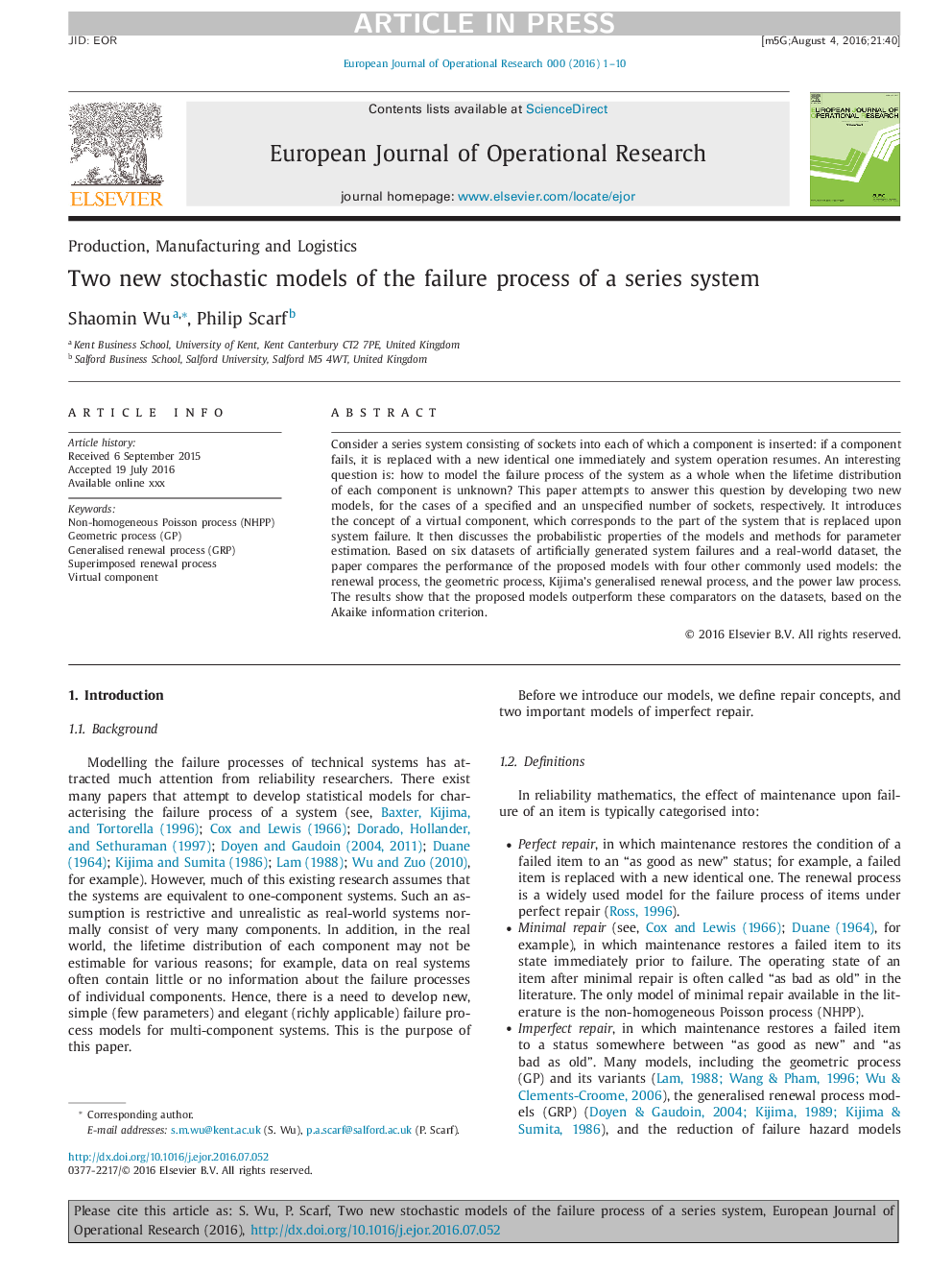| Article ID | Journal | Published Year | Pages | File Type |
|---|---|---|---|---|
| 4960024 | European Journal of Operational Research | 2017 | 10 Pages |
Abstract
Consider a series system consisting of sockets into each of which a component is inserted: if a component fails, it is replaced with a new identical one immediately and system operation resumes. An interesting question is: how to model the failure process of the system as a whole when the lifetime distribution of each component is unknown? This paper attempts to answer this question by developing two new models, for the cases of a specified and an unspecified number of sockets, respectively. It introduces the concept of a virtual component, which corresponds to the part of the system that is replaced upon system failure. It then discusses the probabilistic properties of the models and methods for parameter estimation. Based on six datasets of artificially generated system failures and a real-world dataset, the paper compares the performance of the proposed models with four other commonly used models: the renewal process, the geometric process, Kijima's generalised renewal process, and the power law process. The results show that the proposed models outperform these comparators on the datasets, based on the Akaike information criterion.
Related Topics
Physical Sciences and Engineering
Computer Science
Computer Science (General)
Authors
Shaomin Wu, Philip Scarf,
